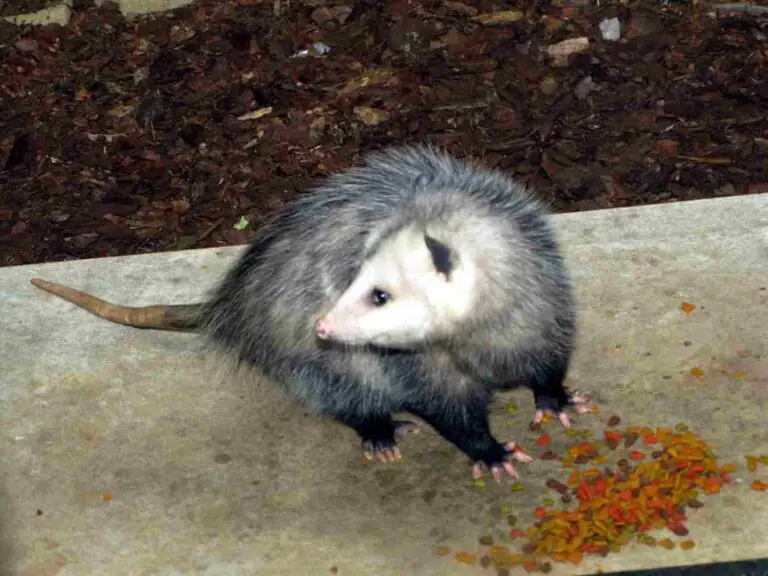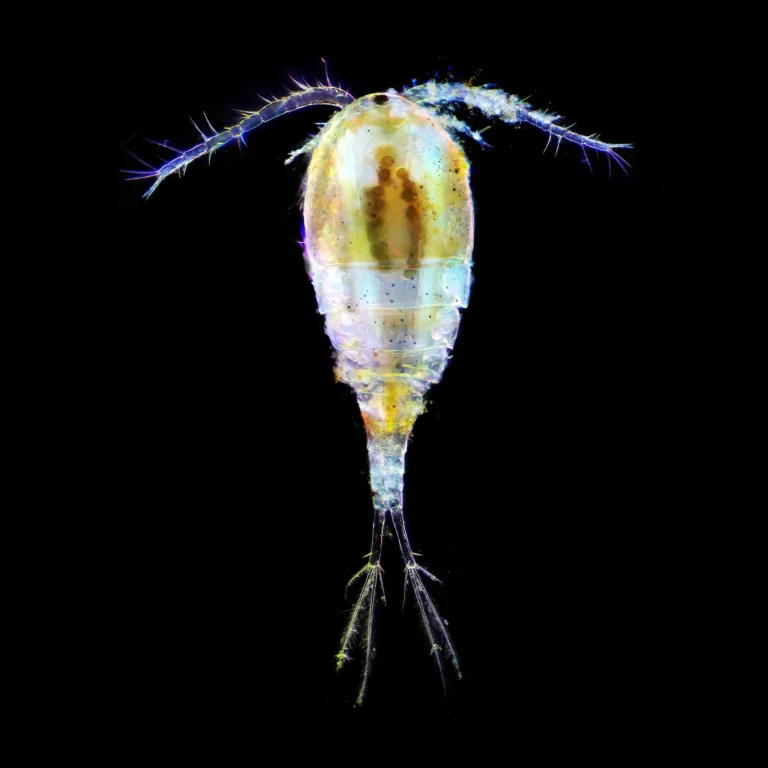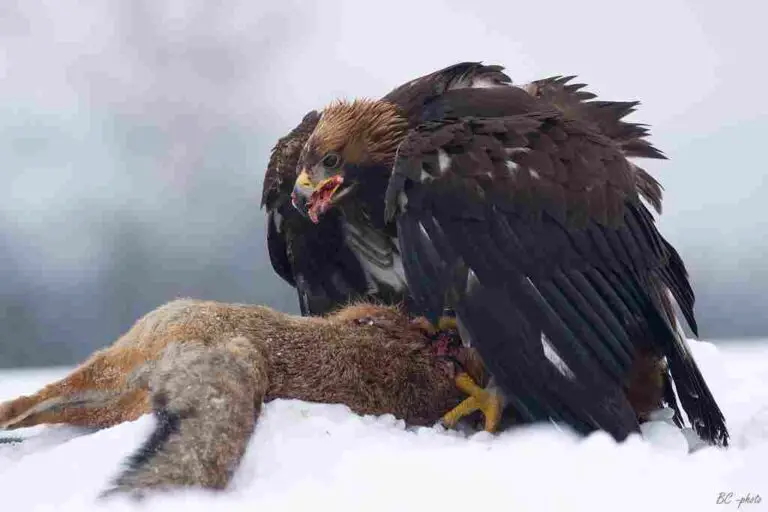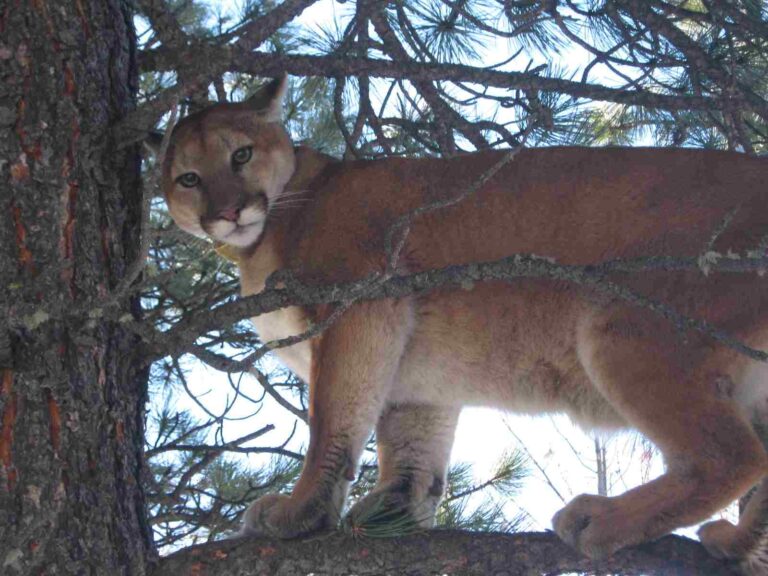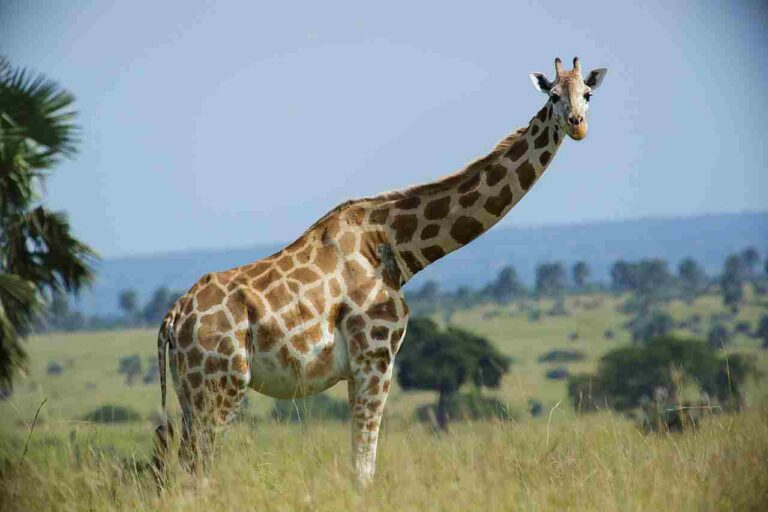Is a Deer a Consumer? Trophic Role of Deer Discussed
A deer is a consumer in the ecosystem because it gains energy and nutrients by feeding on other organisms, namely plants like grasses and shrubs.
This article discusses the trophic role of deer’s as consumers in the ecosystem.
Is a Deer a Producer or a Consumer?
A deer is not a producer, but rather a consumer; because it is incapable of manufacturing its own food through photosynthesis or chemosynthesis; but instead must feed on plants for sustenance.
Reasons Why Deer are Not Producers
1. Deer Do Not Possess Chlorophyll Pigments
Deer do not possess chlorophyll pigments, which is a reason why they are not considered producers in the ecosystem. Chlorophyll is a green pigment found in plants that allows them to carry out photosynthesis, the process by which they convert sunlight into energy. Since deer lack chlorophyll, they are unable to produce their own food through photosynthesis like plants do.
Without the ability to manufacture their own food, deer must rely on external sources for sustenance. They are classified as heterotrophs, meaning they obtain their energy by consuming other organisms. In the case of deer, their primary source of nutrition comes from plant matter, such as leaves, grass, and twigs.
Unlike plants, which have specialized structures like leaves and roots to aid in their photosynthetic processes, deer lack these typical producer features. Instead, they have adapted to their herbivorous lifestyle with physical characteristics that enable them to efficiently consume plant material. For example, deer have sharp incisors and molars that help them tear and grind vegetation, allowing for easier digestion.
Deer occupy a trophic position directly above producers in the food chain. They are considered primary consumers because they primarily feed on plants. As herbivores, deer play a crucial role in the ecosystem by consuming vegetation and controlling plant populations. By doing so, they help maintain the balance between producers and consumers in their respective habitats.
It is important to note that while deer are primary consumers, they are not considered secondary consumers. Secondary consumers are organisms that feed on primary consumers, such as carnivores that prey on herbivores. Deer do not exhibit predatory behaviors and solely rely on plant matter for their nutritional needs.
2. They are Incapable of Manufacturing Their Own Food
Deer are not considered producers in the ecosystem because they are incapable of manufacturing their own food. This inability stems from the fact that deer do not possess chlorophyll pigments, which are essential for photosynthesis. Photosynthesis is the process by which plants convert sunlight into energy, allowing them to produce their own food.
Without the ability to carry out photosynthesis, deer must rely on external sources for sustenance. They are classified as heterotrophs, meaning they obtain their energy by consuming other organisms. In the case of deer, their primary source of nutrition comes from plant matter, such as leaves, grass, and twigs.
Unlike plants, which have specialized structures like leaves and roots to aid in their photosynthetic processes, deer lack these typical producer features. Instead, they have adapted to their herbivorous lifestyle with physical characteristics that enable them to efficiently consume plant material. For example, deer have sharp incisors and molars that help them tear and grind vegetation, allowing for easier digestion.
Deer’s inability to manufacture their own food has significant implications for their trophic role in the ecosystem. They occupy a trophic position directly above producers in the food chain, making them primary consumers. As herbivores, deer play a crucial role in the ecosystem by consuming vegetation and controlling plant populations. By doing so, they help maintain the balance between producers and consumers in their respective habitats.
It is important to note that while deer are primary consumers, they are not considered secondary consumers. Secondary consumers are organisms that feed on primary consumers, such as carnivores that prey on herbivores. Deer do not exhibit predatory behaviors and solely rely on plant matter for their nutritional needs.
Therefore, deer are not producers because they lack chlorophyll pigments and the ability to carry out photosynthesis. They are heterotrophs that rely on consuming other organisms, primarily plant matter, for their energy needs. While they play a vital role as primary consumers in the ecosystem, they do not exhibit predatory behaviors and are not considered secondary consumers.
3. Deer Lack Some Typical Producer Features like Leaves and Roots
Deer lack some typical producer features like leaves and roots, which is another reason why they are not considered producers in the ecosystem. Unlike plants, which have specialized structures to aid in their photosynthetic processes, deer have adapted to their herbivorous lifestyle with physical characteristics that enable them to efficiently consume plant material.
One of the key features that deer lack is leaves. Leaves are essential for plants to carry out photosynthesis, as they contain chlorophyll pigments that capture sunlight and convert it into energy. Without leaves, deer are unable to produce their own food through photosynthesis. Instead, they rely on external sources of nutrition, primarily plant matter.
In addition to lacking leaves, deer also do not possess roots. Roots are crucial for plants to absorb water and nutrients from the soil. They anchor the plant in place and provide stability. Without roots, deer are unable to extract essential nutrients from the ground. Instead, they obtain their nutrients indirectly by consuming plants that have already absorbed them.
The absence of leaves and roots in deer is a significant factor that distinguishes them from producers. While plants have evolved to have these specialized structures to maximize their ability to capture sunlight and nutrients, deer have adapted physical characteristics that allow them to efficiently consume plant material without the need for these features.
Deer have sharp incisors and molars that help them tear and grind vegetation, making it easier for them to digest plant matter. They also have a specialized digestive system that allows them to extract nutrients from the cellulose-rich plant material. These adaptations enable deer to survive and thrive as herbivores, but they also highlight their reliance on consuming other organisms for sustenance.
Drawing from the above, deer lack some typical producer features like leaves and roots, which further solidifies their classification as heterotrophs and primary consumers in the ecosystem. While plants have evolved specialized structures to carry out photosynthesis and absorb nutrients from the soil, deer have adapted physical characteristics that allow them to efficiently consume plant material.
Their absence of leaves and roots distinguishes them from producers and highlights their reliance on consuming other organisms, primarily plant matter, for their energy needs.
4. Producers Serve as Food for Deer
Deer are not considered producers in the ecosystem because they rely on consuming other organisms, primarily plant matter, for their energy needs. One reason for this is that producers serve as food for deer. Producers, such as plants, play a vital role in the food chain by converting sunlight into energy through photosynthesis. They are able to synthesize their own food using chlorophyll pigments in their leaves, which capture sunlight and convert it into energy.
When deer consume plants, they obtain the energy and nutrients that the plants have produced. This makes producers an essential source of sustenance for deer. By feeding on plants, deer are able to extract the energy stored in the plant matter and use it for their own growth, reproduction, and survival. Without the presence of producers, deer would not have a direct source of energy and would struggle to meet their nutritional needs.
The consumption of producers by deer also highlights the interconnectedness of the ecosystem. Producers form the foundation of the food chain, and their energy is transferred to higher trophic levels through consumption. Deer, as primary consumers, occupy the second trophic level and rely on the energy stored in producers to sustain themselves. This energy is then passed on to secondary consumers, such as predators that feed on deer, and so on.
By serving as food for deer, producers contribute to the overall balance and functioning of the ecosystem. They provide the energy and nutrients necessary for the survival of herbivores like deer, as well as the predators that rely on deer as a food source. This interdependence between producers and consumers helps to maintain the stability and biodiversity of the ecosystem.
Therefore, one reason why deer are not considered producers is because they rely on consuming other organisms, particularly plant matter, for their energy needs. Producers, such as plants, serve as a vital source of food for deer, providing the energy and nutrients necessary for their survival. This highlights the interconnectedness of the ecosystem and the role that producers play in sustaining the trophic levels above them.
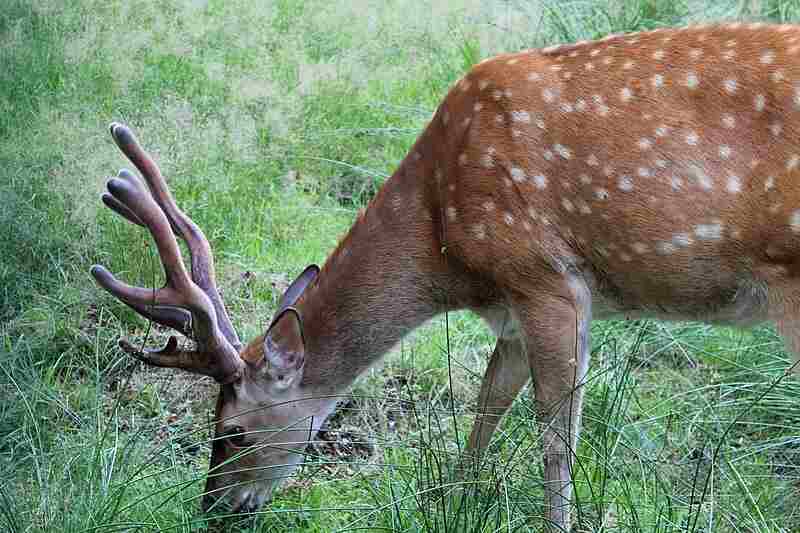
What Type of Consumer is a Deer?
A deer can be classified as a primary consumer. As mentioned earlier, deer are heterotrophs, which means they rely on consuming other organisms for their energy and nutrient needs. In the case of deer, their primary source of food is plants. They consume a variety of vascular and non-vascular plants, including grasses and shrubs, to obtain the energy necessary for their survival.
Being a primary consumer means that deer occupy the second trophic level in the food chain. They directly feed on primary producers, which are the plants in the ecosystem. By consuming plants, deer obtain the energy and nutrients that the plants have synthesized through photosynthesis. This energy is then used by deer for various physiological processes, including growth, reproduction, and maintenance of bodily functions.
The role of deer as primary consumers is crucial in the ecosystem. They act as a bridge between the energy stored in plants and the higher trophic levels in the food chain. By consuming plants, deer transfer the energy from producers to themselves, and this energy is subsequently passed on to secondary consumers, such as predators that feed on deer. This flow of energy through the trophic levels is essential for the functioning and balance of the ecosystem.
Deer’s feeding behavior also supports their classification as primary consumers. They possess herbivorous feeding behaviors, meaning they primarily consume plant matter. Their digestive system is adapted to break down and extract nutrients from plant material, allowing them to efficiently utilize the energy stored in plants. This specialization in consuming plants further reinforces their role as primary consumers.
It is important to note that while deer are primarily herbivores, they may occasionally consume other food sources, such as fungi or small invertebrates. However, these instances are relatively rare and do not significantly alter their classification as primary consumers. The majority of their diet consists of plant matter, making them dependent on primary producers for their energy needs.
Therefore, a deer can be classified as a primary consumer. They are heterotrophs that rely on consuming plants to obtain the energy and nutrients necessary for their survival. By feeding on plants, deer occupy the second trophic level in the food chain and play a vital role in transferring energy from primary producers to higher trophic levels. Their herbivorous feeding behaviors and dependence on plant matter further support their classification as primary consumers in the ecosystem.
Is a Deer a Primary Consumer?
A deer is a primary consumer because it feeds mostly/solely on primary producers like vascular and non vascular plants. This places it directly above such consumers in the food chain.
Reasons Why Deer is a Primary Consumer
1. It is Heterotrophic
Deer are considered primary consumers because they are heterotrophic. Heterotrophs are organisms that obtain their energy by consuming other organisms. In the case of deer, they obtain their energy by feeding on plant matter such as leaves, grass, and twigs. This makes them herbivores, which is another term for primary consumers.
As herbivores, deer play a crucial role in the food chain. They consume the producers, which are the plants, and convert the energy stored in the plants into their own biomass. This energy is then passed on to the next trophic level, which includes secondary consumers such as carnivores or omnivores.
Deer possess specialized digestive systems that allow them to efficiently extract nutrients from plant material. They have a four-chambered stomach, which helps break down the cellulose found in plants. This adaptation enables them to extract the maximum amount of energy from their herbivorous diet.
2. Deer Possess Herbivorous Feeding Behaviors
Deer possess herbivorous feeding behaviors, which is one of the reasons why they are considered primary consumers in the food chain. As herbivores, deer primarily feed on plant matter such as leaves, grass, and twigs. This dietary preference distinguishes them from secondary consumers, which are carnivores or omnivores that feed on other animals.
The herbivorous feeding behaviors of deer are well-adapted to their ecological niche. They have evolved specialized dentition, such as sharp incisors and molars with ridges, which allow them to efficiently chew and grind plant material. This enables them to break down the tough cellulose found in plants and extract the nutrients they need for survival.
Another herbivorous feeding behavior exhibited by deer is selective browsing. They have the ability to selectively choose certain plant species or parts of plants based on their nutritional needs and preferences. This behavior helps maintain a balanced diet and ensures they obtain the necessary nutrients for growth and reproduction.
Deer also exhibit grazing behavior, which involves feeding on grasses and other low-lying vegetation. Grazing is a common feeding strategy among herbivores, as it allows them to efficiently consume large quantities of plant material. This behavior is particularly important for deer during periods of high energy demand, such as the breeding season or harsh winter conditions.
In addition to their herbivorous feeding behaviors, deer also have adaptations that aid in their digestion of plant material. As mentioned earlier, they possess a four-chambered stomach, which allows for the fermentation and breakdown of cellulose by specialized microorganisms. This fermentation process helps extract additional nutrients from the plant material and maximize energy intake.
The herbivorous feeding behaviors of deer play a crucial role in shaping ecosystems. By consuming plant matter, they help regulate plant populations and influence vegetation structure. This, in turn, affects other organisms that depend on these plants for food and habitat. Deer also contribute to nutrient cycling by depositing feces that contain organic matter and nutrients, which enriches the soil and promotes plant growth.
3. Deer are Directly Above Primary Consumers in the Food Chain
Deer are directly above primary consumers in the food chain, which is one reason why they are considered primary consumers themselves. As primary consumers, deer occupy a trophic level that is one step above the producers in the food chain. They rely on consuming plant matter, such as leaves, grass, and twigs, to obtain the energy and nutrients they need for survival.
By feeding on plants, deer play a crucial role in transferring energy from the producers to the rest of the ecosystem. They convert the energy stored in plants into their own biomass, which can then be consumed by secondary consumers. This transfer of energy is essential for maintaining the balance and functioning of the food chain.
Deer’s position as primary consumers also highlights their importance in shaping the dynamics of the ecosystem. As herbivores, they have the ability to influence the abundance and distribution of plant species. By selectively browsing on certain plants, they can impact the composition of vegetation and create favorable conditions for other organisms.
Is a Deer a Secondary Consumer?
A deer is not a secondary consumer because it has no predatory behaviors or tendencies, and survives by feeding exclusively on plant matter.
Reasons Why Deer are Not Secondary Consumers
1. They are Not Predatory
One of the reasons why deer are not considered secondary consumers is because they are not predatory. Unlike secondary consumers, which are typically carnivorous or omnivorous animals that feed on other animals, deer are herbivores. Their diet consists mainly of plant matter such as leaves, grass, and twigs. This means that they do not directly consume other animals as a source of energy.
Deer have evolved to be specialized in consuming plant material, with their digestive system adapted to break down and extract nutrients from cellulose-rich plant fibers. Their teeth are designed for grinding and chewing plant matter, and their long digestive tract allows for the efficient extraction of nutrients from the plant material they consume.
As herbivores, deer play an important role in the ecosystem as primary consumers. They obtain their energy by consuming producers, such as grasses and shrubs, and are an essential link in the food chain. By feeding on plants, deer help to control vegetation growth and maintain the balance of plant populations in their habitat.
While deer may not be considered secondary consumers, they can still be preyed upon by some secondary consumers. Predators such as wolves, mountain lions, and coyotes may hunt and feed on deer as a source of food. However, this does not change the fact that deer themselves primarily consume plant matter and occupy a trophic position directly above producers in the food chain.
2. Deer Feed Exclusively on Plant Matter
Deer feed exclusively on plant matter, which is one of the reasons why they are not considered secondary consumers. As herbivores, their diet consists mainly of leaves, grass, and twigs. They do not directly consume other animals as a source of energy.
Deer have evolved specialized digestive systems that allow them to break down and extract nutrients from cellulose-rich plant fibers. Their teeth are designed for grinding and chewing plant matter, and their long digestive tract enables them to efficiently extract nutrients from the plant material they consume. This adaptation to a plant-based diet is what sets them apart from secondary consumers, which typically feed on other animals.
By consuming plant matter, deer play a crucial role as primary consumers in the ecosystem. They obtain their energy by feeding on producers such as grasses and shrubs. This makes them an essential link in the food chain, as they transfer energy from plants to higher trophic levels.
Deer help to control vegetation growth and maintain the balance of plant populations in their habitat. Their feeding habits can prevent overgrowth of certain plant species and promote the growth of others. This has a cascading effect on the entire ecosystem, influencing the abundance and distribution of other organisms that rely on these plants for food and shelter.
In addition to their role as primary consumers, deer can also be important prey for some secondary consumers. Predators such as wolves, mountain lions, and coyotes may hunt and feed on deer as a source of food. However, this does not change the fact that deer themselves primarily consume plant matter and occupy a trophic position directly above producers in the food chain.
Understanding the feeding habits of deer and their trophic role in the ecosystem is essential for studying and managing wildlife populations. It allows us to assess the impact of deer on vegetation, as well as their interactions with other species in the ecosystem. By recognizing deer as primary consumers that feed exclusively on plant matter, we can better appreciate their ecological significance and implement effective conservation strategies to ensure their long-term survival.
3. The Trophic Position of Deer is Directly Above Producers
The trophic position of deer is directly above producers, which is another reason why they are not considered secondary consumers. In the food chain, producers are the organisms that can produce their own food through photosynthesis, such as plants and algae. They convert sunlight into energy and serve as the primary source of energy for other organisms in the ecosystem.
Deer, on the other hand, do not possess the ability to produce their own food. They are heterotrophic organisms, meaning they rely on consuming other organisms for energy. In the case of deer, their diet consists solely of plant matter. They feed on leaves, grass, and twigs, extracting nutrients from these sources to meet their energy requirements.
By feeding on producers, deer play a crucial role as primary consumers in the ecosystem. They obtain energy from the plant material they consume and transfer it to higher trophic levels. This energy flow is essential for the functioning of the ecosystem, as it supports the growth and survival of other organisms.
Deer are herbivores, which means they have adapted to a plant-based diet. Their digestive systems are specialized to break down and extract nutrients from cellulose-rich plant fibers. They have teeth designed for grinding and chewing plant matter, and a long digestive tract that allows for efficient nutrient absorption.
The trophic position of an organism refers to its position in the food chain relative to other organisms. In the case of deer, their trophic position is directly above producers. They consume plant matter, which is produced by photosynthetic organisms, and serve as a link between producers and higher trophic levels.
While deer primarily consume plant matter, they can also be preyed upon by some secondary consumers. Predators such as wolves, mountain lions, and coyotes may hunt and feed on deer as a source of food. However, this does not change the fact that deer themselves occupy a trophic position directly above producers.
Understanding the trophic position of deer is important for studying and managing ecosystems. It allows us to assess the flow of energy and nutrients through the food chain, as well as the interactions between different organisms.
4. Deer May be Preyed Upon by Some Secondary Consumers
Deer may be preyed upon by some secondary consumers, such as coyotes. This is one of the reasons why deer are not considered secondary consumers in the food chain. Secondary consumers are organisms that feed on primary consumers, which in turn feed on producers. They occupy a higher trophic level and play a crucial role in regulating the population of primary consumers.
Coyotes are opportunistic predators that have been known to hunt and feed on deer. They are carnivorous mammals that primarily feed on small mammals like rodents, but they are also capable of taking down larger prey such as deer. While deer themselves are herbivores and feed exclusively on plant matter, they can still become prey for secondary consumers like coyotes.
The predation of deer by secondary consumers like coyotes highlights the interconnectedness of the food chain and the complex dynamics within ecosystems. It demonstrates how energy and nutrients flow through different trophic levels, with each level depending on the one below it for sustenance. The consumption of deer by secondary consumers contributes to the regulation of deer populations and helps maintain a balance within the ecosystem.
The predation of deer by secondary consumers can have both positive and negative impacts on the ecosystem. On one hand, it helps control the population of deer, preventing overgrazing and reducing competition for resources. This can benefit other plant and animal species in the ecosystem by allowing them to thrive and maintain a healthy population.
On the other hand, excessive predation by secondary consumers can have negative effects on deer populations. If the number of predators increases or if their hunting success rate is high, it can lead to a decline in deer numbers. This can disrupt the balance within the ecosystem and have cascading effects on other species that depend on deer for food or habitat.
It is important to note that while deer may be preyed upon by some secondary consumers, they themselves do not actively hunt or consume other organisms. They are strictly herbivorous and rely on plant matter for their energy needs. Their trophic position remains directly above producers, as they obtain energy by consuming plants and serve as a link between producers and higher trophic levels.
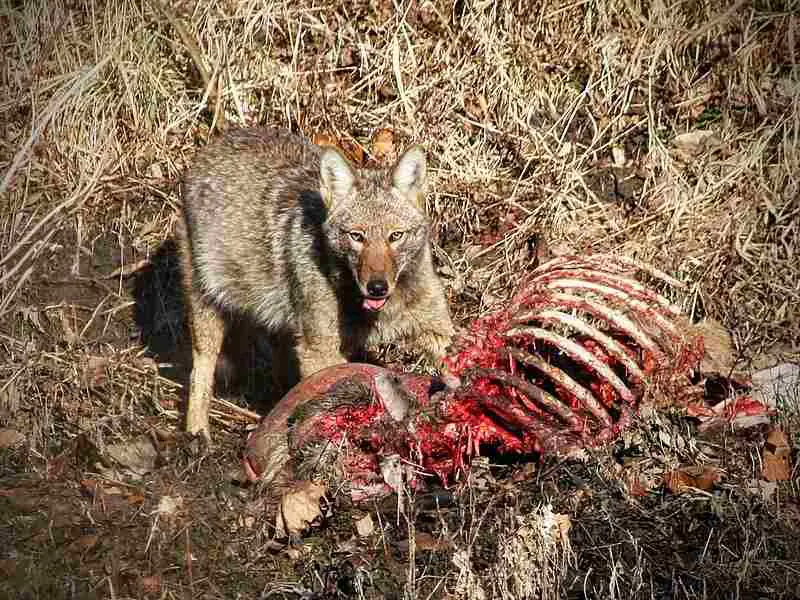
FAQs
1. Is a Deer an Omnivore?
No, a deer is not an omnivore. Deer are herbivores, meaning they primarily feed on plant matter. They do not consume meat or other animal products as part of their diet.
Deer are known for their selective feeding habits, preferring to graze on grasses, leaves, and tender shoots. They have specialized teeth and digestive systems that are adapted for breaking down and extracting nutrients from plant material. This makes them well-suited for a herbivorous diet.
In terms of trophic classification, an omnivore is an organism that can consume both plant and animal matter. However, deer do not exhibit this behavior. They solely rely on vegetation for their nutritional needs.
Deer play an important role in ecosystems as primary consumers. They consume large quantities of plant material, which helps to control vegetation growth and maintain the balance of plant populations. By feeding on plants, deer indirectly affect the abundance and distribution of other organisms in their environment.
It is worth noting that while deer are primarily herbivores, they may occasionally exhibit opportunistic behavior and consume small amounts of animal matter. This can include insects, bird eggs, or even carrion in certain circumstances. However, these instances are rare and do not make deer true omnivores.
2. Is a Deer a Producer, Consumer, or Decomposer?
A deer is a consumer in the trophic hierarchy. Unlike producers, such as plants, deer do not possess chlorophyll pigments necessary for photosynthesis. This means they are not autotrophic and cannot manufacture their own food. Instead, deer rely on consuming organic matter, making them consumers in the ecosystem.
Deer are herbivores, feeding exclusively on plant matter. They exhibit herbivorous feeding behaviors, such as grazing on grasses, leaves, and tender shoots. Their specialized teeth and digestive systems are adapted for breaking down and extracting nutrients from plant material. This further supports their role as consumers.
In terms of trophic classification, deer can be considered primary consumers. They occupy a position directly above producers in the food chain. By consuming large quantities of plant material, deer play a crucial role in controlling vegetation growth and maintaining the balance of plant populations. Their feeding habits indirectly impact the abundance and distribution of other organisms in their environment.
Deer are not secondary consumers. Secondary consumers are typically predatory and feed on other consumers. Deer do not exhibit predatory behavior and solely rely on plant matter for their nutritional needs. Their trophic position is directly above producers, distinguishing them from secondary consumers.
Deer also do not fit the classification of decomposers. Decomposers, such as fungi and bacteria, play a vital role in breaking down dead organic matter and recycling nutrients back into the ecosystem. Deer are neither saprophytic nor detritivorous, meaning they do not feed on organic remains or waste material. Instead, they primarily consume living plant matter.
3. Is a Deer a Herbivore?
Yes, a deer is a herbivore. As a herbivore, deer primarily feed on plant matter for their nutritional needs. They exhibit herbivorous feeding behaviors, such as grazing on grasses, leaves, and tender shoots. Their specialized teeth and digestive systems are adapted for breaking down and extracting nutrients from plant material.
Deer play a crucial role in the ecosystem as herbivores. By consuming large quantities of plant material, they help to control vegetation growth and maintain the balance of plant populations. This has a direct impact on the abundance and distribution of other organisms in their environment.
Being herbivores, deer are not predators and do not exhibit predatory behavior. They do not feed on other consumers or animals. Instead, they rely solely on plant matter as their source of food. This distinguishes them from secondary consumers, which typically feed on other consumers in the food chain.
In terms of trophic classification, deer can be considered primary consumers. They occupy a position directly above producers in the food chain. Their feeding habits and dependence on plant matter make them an important link in the transfer of energy and nutrients from plants to higher trophic levels.
Deer are well-adapted to their herbivorous lifestyle. They have evolved to efficiently extract nutrients from plant material, utilizing their complex digestive systems to break down cellulose and extract essential nutrients. This allows them to thrive on a diet consisting solely of plant matter.
Conclusion
* In conclusion, a deer is classified as a consumer in the ecosystem due to its herbivorous feeding behaviors and dependence on plant matter for nutrition.
* Reasons why deer are considered primary consumers include their position directly above producers in the food chain, their heterotrophic nature, and their herbivorous feeding habits.
* On the other hand, deer are not considered secondary consumers because they do not exhibit predatory behavior and exclusively feed on plant matter.
* Deer play a crucial role in controlling vegetation growth and maintaining the balance of plant populations, which directly impacts the abundance and distribution of other organisms in their environment.
* Their specialized teeth and digestive systems are adapted for breaking down and extracting nutrients from plant material, allowing them to thrive on a diet consisting solely of plant matter.
* Overall, deer are important links in the transfer of energy and nutrients from plants to higher trophic levels in the ecosystem.
* In summary, a deer is a herbivore that occupies the trophic position of a primary consumer.
* They are not producers due to their inability to manufacture their own food and lack of chlorophyll pigments.
* While they are not considered secondary consumers, they may be preyed upon by some secondary consumers in the food chain.
* A deer’s trophic role as a consumer is essential for maintaining the balance and functioning of the ecosystem.
* Their herbivorous feeding behaviors and dependence on plant matter make them an important link in the transfer of energy and nutrients through the food chain.
